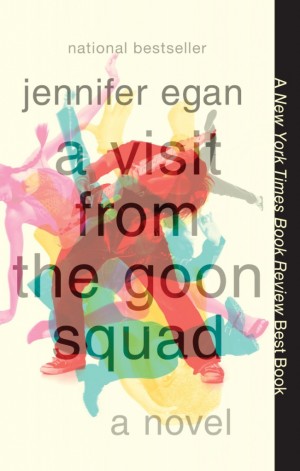“Goon Squad” Worth A Visit
The beauty and the misery of life is that one cannot see his journey in a linear way. No one is really conscious at life’s start, and we rarely know, when we die, what will happen to our offspring and our legacy. Jennifer Egan’s Pulitzer Prize-winning novel, A Visit from the Goon Squad, gives us the luxury of seeing the lives of her many compelling characters from a bird’s eye view.
Reading the book through for the first time has the feeling of watching Memento, Babel or starting HBO’s The Wire halfway through the season. As a reader, you are dumped in the middle of an intriguing, heartbreaking drama, and just when you get your bearings and figure out who the characters are and how they relate to one another, the chapter ends and you find yourself completely lost once more, often inside the head of the most peripheral character of the previous one.
The first read of A Visit from the Goon Squad, while engaging and provocative, is downright annoying. This makes the second read a real pleasure. The book shines with glittering gems, initially invisible to the reader, but all the more enjoyable for it the next time around.
While the book’s many settings range from San Francisco and New York to Naples and Africa, the action centers on individuals in some way related to the music scene of the 1980s, and all of the characters tie back to either Bennie, a punk rocker who becomes a successful record executive, and Sasha, the woman who works as his secretary.
At the start, we meet Sasha and Bennie, respectively, and are made keenly aware of seemingly insurmountable character flaws that color everything they do and threaten to ruin the successful lives they have made for themselves. We follow them obliquely for the rest of the book, catching snatches of their lives as they interact with their families, co-workers, significant others, friends and enemies.
Through their relationships and personal travails, Egan reveals certain truths about humanity. Even the most broken people sometimes shine when they must rise to occasion. The devastating effect of enormous greed ripples throughout the book, impacting almost every character. Finally, Egan treats us to her vision of the near future. This chapter’s darkly hilarious tone feels more like a satire of our culture’s current digital obsessions than a true premonition.
One of the most interesting chapters is a beautiful story told completely via a PowerPoint-esque format; supposedly presenting information on “great rock and roll pauses” that effortlessly reveals a family’s tenderness and dysfunction through the slides of a young girl.
The beginning of the book quotes In Search of Lost Time by Marcel Proust, in which he describes the “hazardous pilgrimages” of trying to find older versions of ourselves by returning to places we loved long ago. Proust asserts that these journeys often end in bitter disappointment. In the end, it is Egan who takes us on such a pilgrimage, observing the lives of two characters she clearly loves. Fortunately for her readers, rather than disappointment, Egan’s pilgrimage ends in a deeply satisfying celebration of the irrepressible human spirit.


